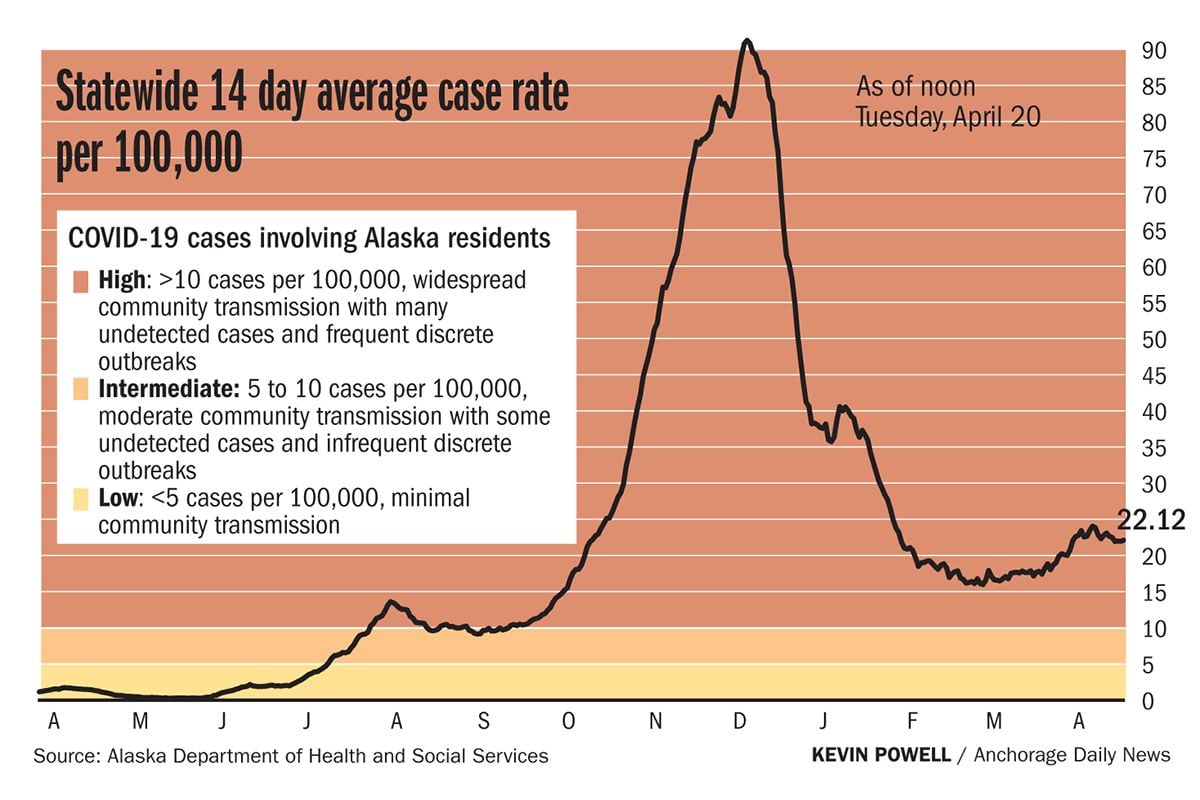
Although the number of cases and hospitalizations in Alaska remain below the levels of a November and December peak, most regions in the state are still in the highest alert category based on their current per capita infection rate.
Health officials continue to encourage Alaskans to wear face masks in public, avoid large gatherings, wash their hands regularly, and get vaccinated against COVID-19 to prevent further spread.
Alaska became the first state in the country to qualify for the vaccine in March for anyone 16 and older living or working in the state. You can visit covidvax.alaska.gov or call 907-646-3322 to sign up for a vaccination appointment; new appointments are regularly added. The telephone line is manned from 9:00 AM to 6:30 PM on weekdays and from 9:00 AM to 4:30 PM on weekends.
Tuesday, 296,631 people – about 48% of Alaskans who were eligible for an injection – had received at least their first dose. At least 243,274 people – about 41% of Alaska’s residents ages 16 and older – were considered fully vaccinated, according to the state’s vaccine surveillance dashboard.
On Tuesday, there were 39 people with confirmed or suspected cases of COVID-19 in hospitals across the state, well below a peak in late 2020.
Of the 100 cases reported among Alaska residents on Tuesday, 19 were in Anchorage plus one in Eagle River; 20 in Fairbanks; 19 in Wasilla; 15 in Palmer; seven at the North Pole; three at Anchor Point; two in Soldotna; two in Ketchikan; two in Dillingham; one in Valdez; one in Kenai; one in Kodiak; one in Big Lake; one in Houston; one in Nome; and one at Bethel.
Among communities of less than 1,000 people not named to protect the privacy of the residents, one was in the northern Kenai Peninsula Borough; one in the Fairbanks North Star Borough; and one in the Kusilvak Census Area.
There were also seven new cases among non-residents: four in Unalaska; one in Valdez; one in Prudhoe Bay; and one in an unidentified region of the state.
While people can be tested more than once, each case reported by the state health department represents only one person.
The state’s data does not specify whether people who test positive for COVID-19 have symptoms. The CDC estimates that more than half of infections in the country are transmitted by asymptomatic people.